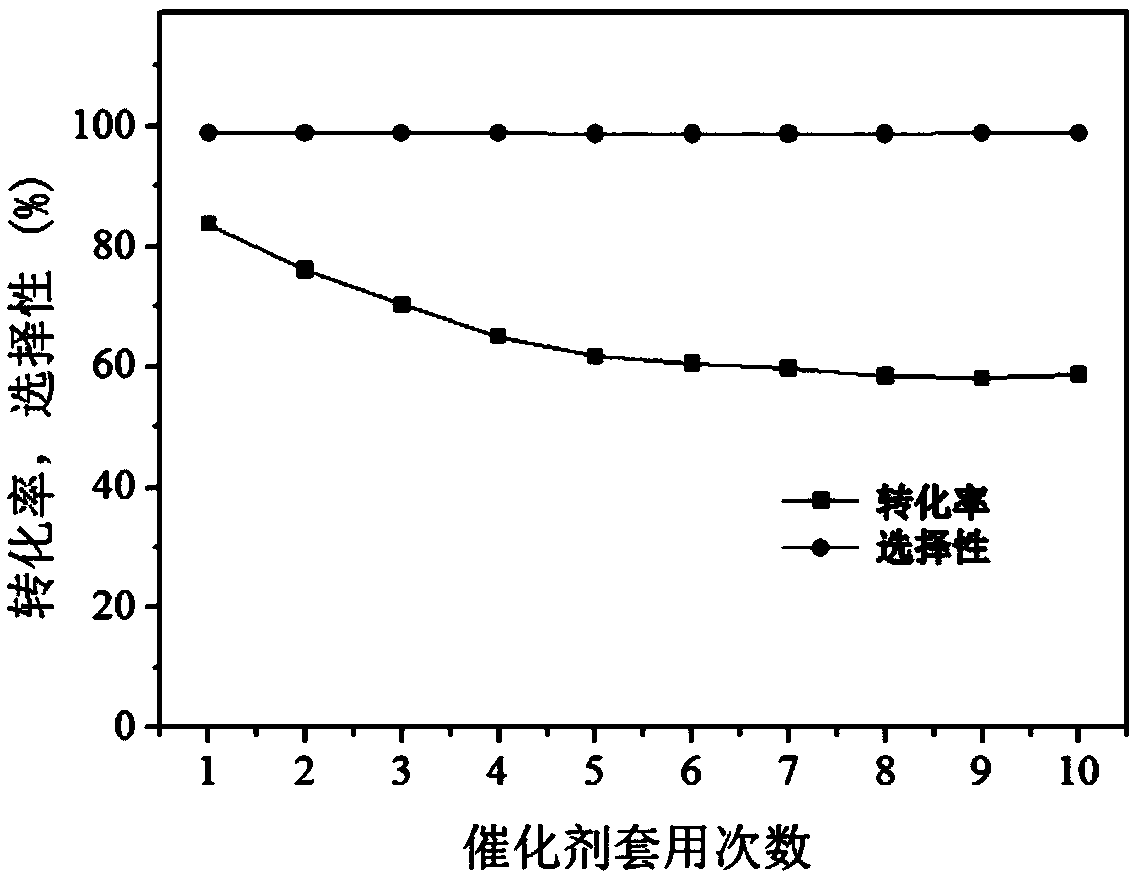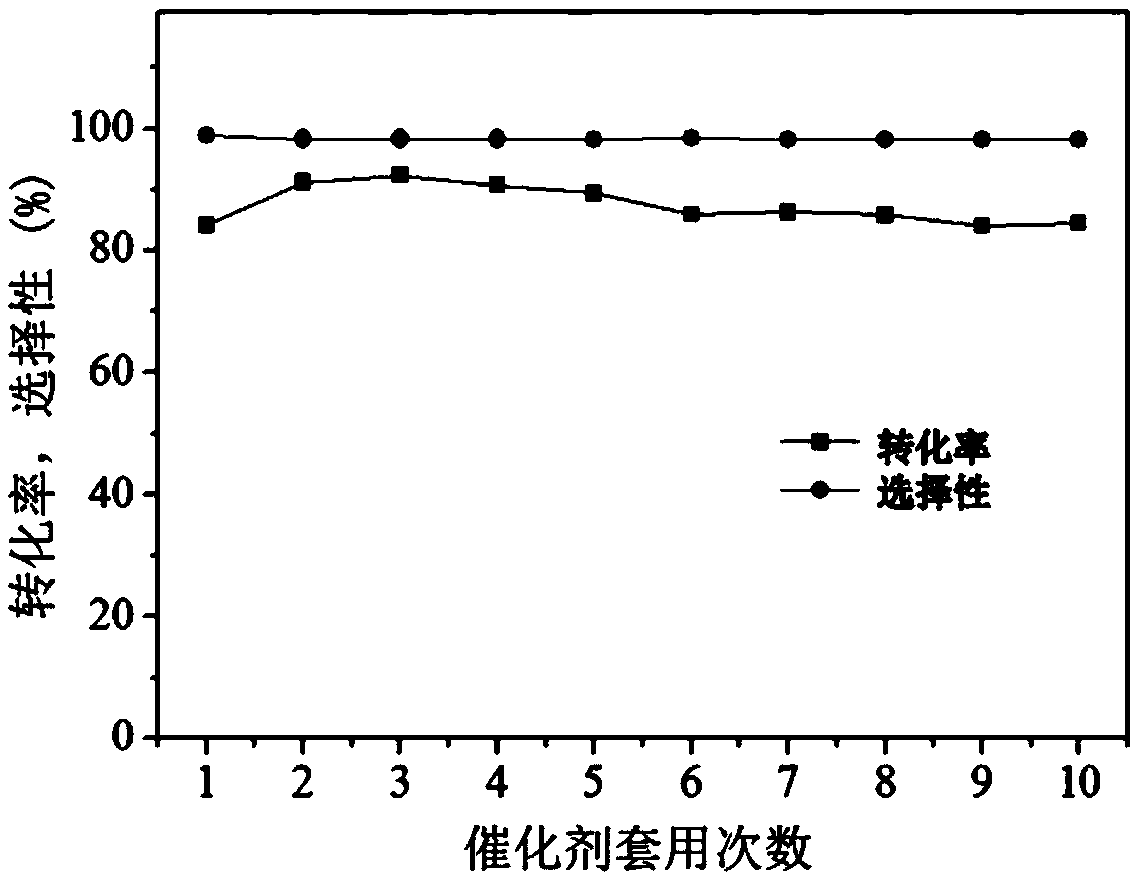Regeneration method for Pd@CN catalyst for phenol hydrogenation
A catalyst and phenol technology, applied in the field of catalysis, can solve the problems of limited mass transfer, easy blockage of catalyst pores, low economic benefits, etc., and achieve the effect of restoring catalytic activity
- Summary
- Abstract
- Description
- Claims
- Application Information
AI Technical Summary
Problems solved by technology
Method used
Image
Examples
Embodiment 1
[0025] The mixture after phenol hydrogenation reaction catalyzed by Pd@CN catalyst was filtered and separated to recover the catalyst. The recovered catalyst was placed in the reactor, a certain amount of cyclohexane was added, the reactor was sealed, and hydrogen was replaced 5 times. at 110 o C, 0.5 MPa, 500 rpm for 60 min. After the catalyst was recovered by filtration, it entered the next phenol hydrogenation activity test experiment, which was applied 10 times in total. The change of catalytic performance of Pd@CN catalyst is as follows: figure 2 shown. The conversion rate and selectivity of phenol remained basically unchanged, showing good stability.
Embodiment 2
[0027] The mixture after the phenol hydrogenation reaction catalyzed by the Pd@CN catalyst was filtered and separated to recover the catalyst. The recovered catalyst was placed in a reactor, a certain amount of water was added, the reactor was sealed, and nitrogen replacement was used for 5 times. at 80 o C, 0.1MPa, 100 rpm washing for 30 min. After the catalyst was recovered by filtration, it entered the next phenol hydrogenation activity test experiment, which was applied 10 times in total. The results showed that the selectivity of cyclohexanone remained basically unchanged, and the conversion of phenol decreased by about 15%.
Embodiment 3
[0029] The mixture after phenol hydrogenation reaction catalyzed by Pd@CN catalyst was filtered and separated to recover the catalyst. The recovered catalyst was placed in the reactor, a certain amount of ethanol was added, the reactor was sealed, and replaced with argon 5 times. at 140 o C, wash at 1.5 MPa, 300 rpm for 90 min. After the catalyst was recovered by filtration, it entered the next phenol hydrogenation activity test experiment, which was applied 10 times in total. The results showed that the selectivity of cyclohexanone remained basically unchanged, and the conversion of phenol decreased by about 25%.
PUM
 Login to View More
Login to View More Abstract
Description
Claims
Application Information
 Login to View More
Login to View More - R&D
- Intellectual Property
- Life Sciences
- Materials
- Tech Scout
- Unparalleled Data Quality
- Higher Quality Content
- 60% Fewer Hallucinations
Browse by: Latest US Patents, China's latest patents, Technical Efficacy Thesaurus, Application Domain, Technology Topic, Popular Technical Reports.
© 2025 PatSnap. All rights reserved.Legal|Privacy policy|Modern Slavery Act Transparency Statement|Sitemap|About US| Contact US: help@patsnap.com


